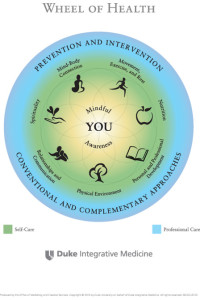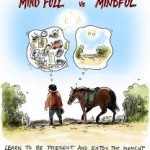How To Create The Mindfulness Habit

We humans are called creatures of habit so it would make sense to explore how we can utilize our natural tendencies to create the mindfulness habit. Before I begin I would like to point out the irony of using habit and mindfulness in the same sentence. By definition, a mindful experience, or as I call it, “Mindfuling” is embodied with intention and therefore defies the habit description. Habits are usually thought of as things we do automatically. In mindfulness practice we do things to help break patterns/habits. Automatic patterns tend to create limitation so to the extent we can limit those patterns we can also stretch limitations and creativity. That being said, how can we create flexible mindfulness habits that are not written in stone but have a useful flow to them?
The first thing to consider is motivation. Without the proper motivation it will be difficult to sustain the necessary level of mindfuling. My experience has been that because mindfulness is so different from what we are used to it can be a challenge to stay with it. It is very helpful if there is a deep yearning to relieve a sense of discomfort of some sort. If that yearning is there then there is a good chance to stay with the practice on a regular basis. Once that happens it could be argued that a habit of sorts has been created. I’ve seen people practicing mindfulness because it is the new “in thing” and because they don’t want to be left out. These people usually don’t stick with it to any degree that will help. There is a lot of watered down mindfulness lately that is much easier to stick with but does not have the capacity to create lasting constructive change. However, it may plant a seed for some time in the future when the motivation is there.
The next factor to consider is the level of accessibility to reliable instruction. There is a lot of information out there and sometimes it is difficult to know what is good. I don’t know of any short cuts to figuring this out. Like anything else you need to do your research and do your best to know what seems right for you. There are lots of excellent books, videos, articles and other forms of information to choose from. The best by far is to find a teacher who will work with you in person. It can be individually but I find that medium sized groups are best. If the teacher is a good communicator, has a sense of humor and is experienced in mindfulness there is a good chance you will enjoy the learning experience. That in turn will complement the motivation and add to your ability to practice regularly. Once again, I hesitate to use the word habit so I’ll just stay with regularly. Other forms of contact with the teacher such as phone, video conferencing etc. can be very effective but the greatest impact is in person.
Once the two key elements of motivation and teacher are addressed we can look at some of the other factors to help us create flexible, mindful habits . Although we are practicing to be in the present moment it is wise to use mindful attention to do some constructive planning for the future. Simple practical ideas around time of day, environment, attitudes and posture help us to slip into our present moment practice of mindfulness meditation. For bringing mindfulness into daily activity the most important thing is remembering. Since mindfulness in daily life doesn’t require a formal shift, all we need to do is to remember to bring what we have learned from the formal practice into our daily lives.
Finally, experiencing heartening results helps us to keep the practice going. Although a key attitude is non striving, there is no denying that when we begin to achieve what we are not trying to achieve :-), enthusiasm will mix with motivation and instruction to create a potent habit infused with flexibility.
How To Create The Mindfulness Habit Read More »









